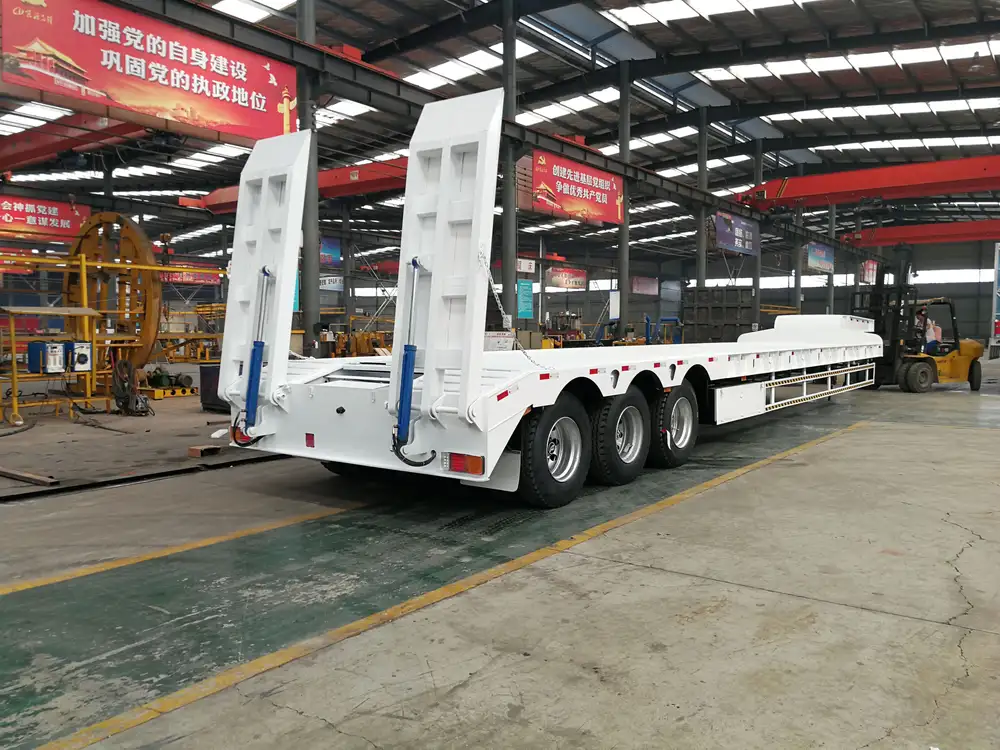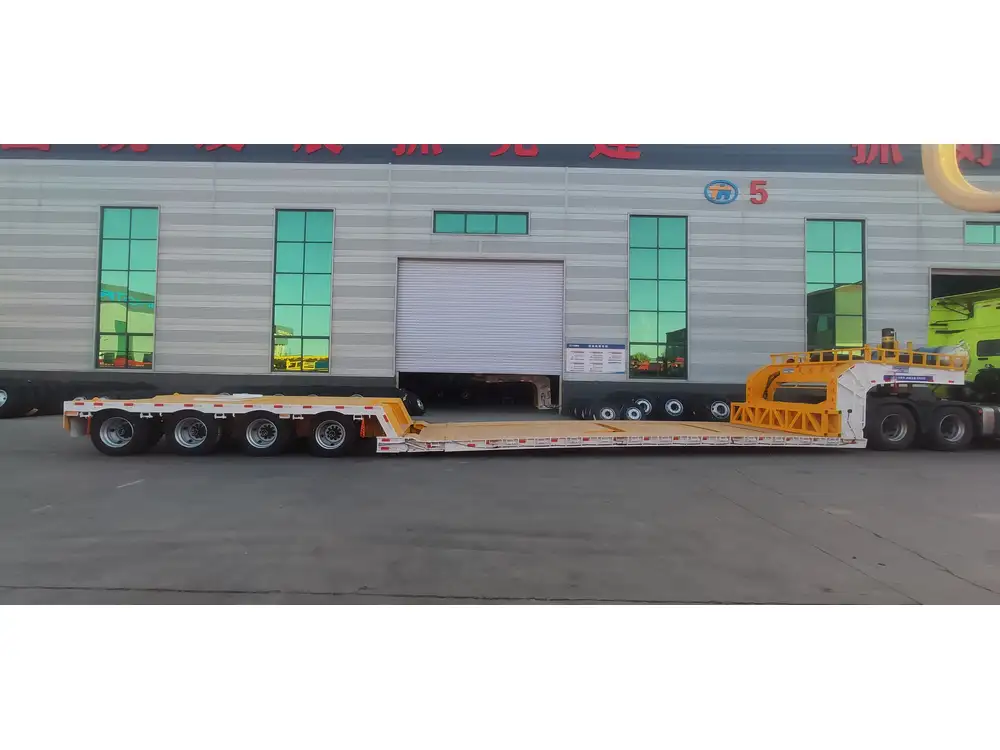When it comes to logistics, knowing how many pallets can fit on a flatbed trailer is a critical element for any business involved in shipping and transportation. This knowledge not only facilitates efficient cargo management but also helps in optimizing shipping costs, planning for deliveries, and ensuring compliance with weight regulations. In this article, we will dissect this topic thoroughly to provide you with a complete understanding, including various pallet sizes, trailer dimensions, cargo considerations, and effective loading strategies.
Understanding Flatbed Trailers
Flatbed trailers are a staple in the transportation industry, valued for their versatility and ability to accommodate a wide array of cargo types. Unlike enclosed trailers, flatbeds provide an unobstructed space for loading and unloading goods, making them particularly suitable for heavy machinery, large building materials, and, of course, pallets.
Types of Flatbed Trailers
Standard Flatbed Trailers:
- Dimensions: Typically, a standard flatbed trailer measures 48 to 53 feet in length and 8.5 feet in width, providing a spacious platform for loading goods.
Step Deck Trailers:
- Dimensions: Step deck trailers are generally lower in height, featuring a two-level design that allows for taller loads. They usually measure 48 or 53 feet in length.
Double Drop Trailers:
- Dimensions: These trailers are designed for transporting super-sized loads. They are lower in height and have a drop deck allowing for even taller items while maintaining legal height limits.
Rollback Trailers:
- Dimensions: Designed specifically for ease of loading and unloading, rollback trailers feature a ramp that can be tilted, making them perfect for vehicles and heavy machinery.

Pallet Dimensions and Sizes
Pallets come in a variety of sizes, but the most common dimensions in North America are:
- Standard GMA Pallet: 48 x 40 inches
- European Pallet (Europallet): 120 x 80 cm (approximately 47 x 31 inches)
- Other Sizes: Such as 42 x 42 inches or 48 x 48 inches, which are less common but still in use.
Understanding these dimensions is pivotal when calculating how many pallets fit on a flatbed trailer.
Determining Capacity: Calculating Pallet Fit on Flatbed Trailers
Key Considerations
Measurement of the Flatbed Trailer:
- A standard 53-foot flatbed trailer offers a maximum usable space of approximately 48 to 52 feet in length, depending on the specific design and manufacturer.
Available Width:
- The standard width of a flatbed trailer is about 8.5 feet, or 102 inches, giving it ample room for pallets.
Legal Weight Limits:
- Most flatbed trailers are restricted to a maximum weight of 80,000 pounds, including the weight of the trailer itself. Each pallet’s weight will impact the overall carriage capacity.

Pallet Configuration
When stacking pallets, configuration matters. Here are common loading configurations:
| Pallet Size | Pallets Per Layer (Length) | Pallets Per Layer (Width) | Total Layers Possible | Total Pallets |
|---|---|---|---|---|
| 48″ x 40″ | 12 | 2 | 2-3 | 24-36 |
| 120 cm x 80 cm | 12 | 2 | 2-3 | 24-36 |
Scenario Analysis
Maximized Load with Standard GMA Pallets:
- Lengthwise Arrangement: Typically up to 12 pallets can be arranged in length.
- Width Arrangement: 2 pallets wide fits comfortably.
- Total: This leads to a total of 24 pallets.
- Height Consideration: Depending on the height and weight of the pallets, you can stack 2-3 layers, which results in a maximum carry of 48 to 72 pallets, given weight compliance.
Weight Limitations:
- As an example, if each GMA pallet weighs about 35-50 pounds when loaded, and assuming you load the trailer to its maximum 80,000-pound limit, you can adjust the pallet quantity accordingly.
Loading Techniques
Loading strategies significantly affect the efficiency of space utilization and stability during transit:
- Side Loading: Lining pallets along the width of the trailer can help maximize space.
- Seating: Ensuring pallets are seated flush against each other reduces movement and damage during transport.
- Weight Distribution: Always distribute pallets evenly to avoid potential tipping hazards.

Legal Compliance and Safety
It’s crucial to adhere to legal requirements. Each state has its own rules regarding weight limits and the safe transport of materials. Make sure to familiarize yourself with Federal Motor Carrier Safety Administration (FMCSA) regulations and local laws regarding weight limits and oversized loads.
Secure Cargo
Utilizing proper tie-down methods ensures pallets remain secured during transit. Here are elements to consider:
- Ratchet Straps: Use high-quality straps rated for the load weight.
- Tarps: Protect cargo from environmental elements and potential road debris.
- Edge Protectors: These help prevent damage to both the cargo and securing equipment.
Conclusion
Understanding how many pallets fit on a flatbed trailer is not just about the numbers; it’s about utilizing this information to maximize efficiency, comply with regulations, and ensure safe transportation. By considering the variety of pallet sizes, the dimensions of different flatbed trailers, and effective loading techniques, you can streamline operations and minimize costs associated with shipping logistics.
To exceed your shipping requirements and optimize your flatbed trailer use, always keep in mind weight distribution, legal regulations, and securing methods. By implementing these best practices, you can truly elevate your logistics game and enhance overall business success.

FAQ: Frequently Asked Questions
How do I calculate the weight of my load?
- To calculate the weight, add the weight of the pallets plus the weight of the goods loaded onto each pallet.
What is the best way to secure pallets on a flatbed?
- Use a combination of ratchet straps, edge protectors, and tarps, ensuring that all cargo is tightly secured.
Can I stack pallets higher than three layers?
- While it is physically possible, be cautious of the weight and stability; consult the specifications from your flatbed trailer manufacturer for safe stacking guidelines.
Are there additional considerations for hazardous materials?
- Yes, specific regulations under the Department of Transportation (DOT) apply to hazardous materials. Ensure compliance with labeling and compatibility with other cargo.
With this knowledge, you will not only be able to determine how many pallets fit on a flatbed trailer but also master the logistics of effective and safe transportation.



